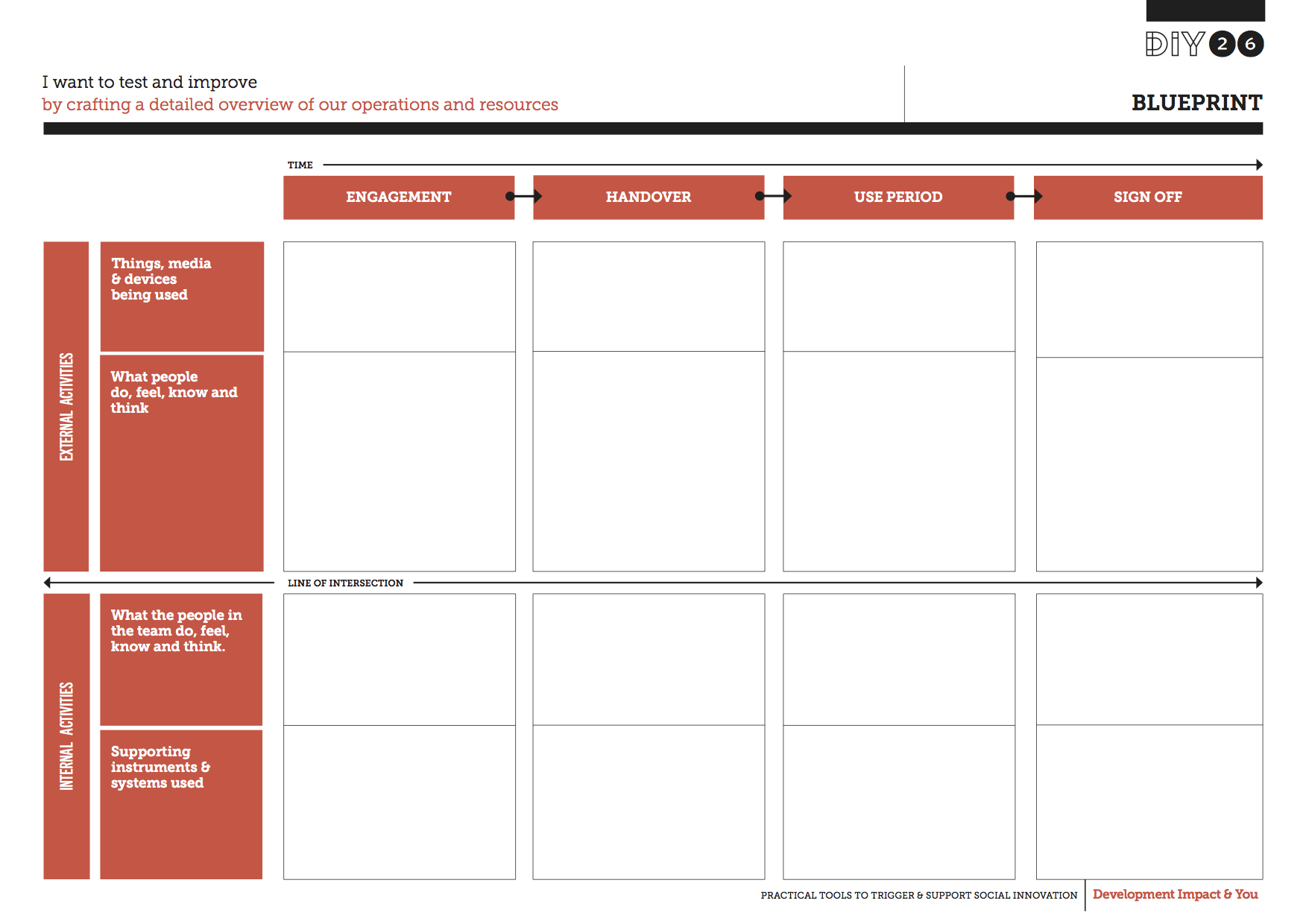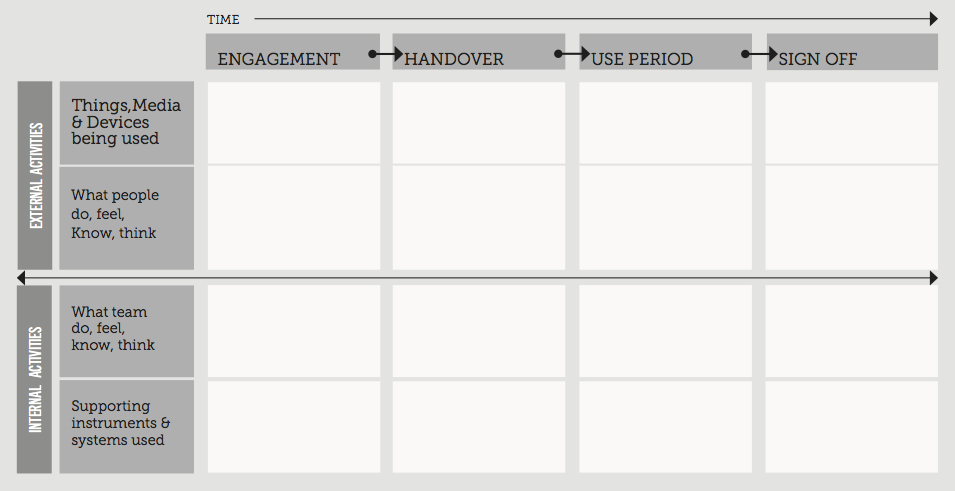A Blueprint gives an overview of an organisation’s operations, such as key activities, products, services, and points of interaction with the intended audience, stakeholders and beneficiaries. Blueprints help make explicit how existing resources can be repurposed or recycled, and what new resources will be needed. They also give a sense of the overall impact your activities might have. This is highly useful when trying to plan or improve your work.
Filling in the worksheet helps break down your work into smaller details as you fill out each section. It provides structure to this analysis by showing a ‘line of interaction’. This line represents the distinction between the activities of the intended audience, beneficiaries and other stakeholders, and the activities that take place within your organisation.

